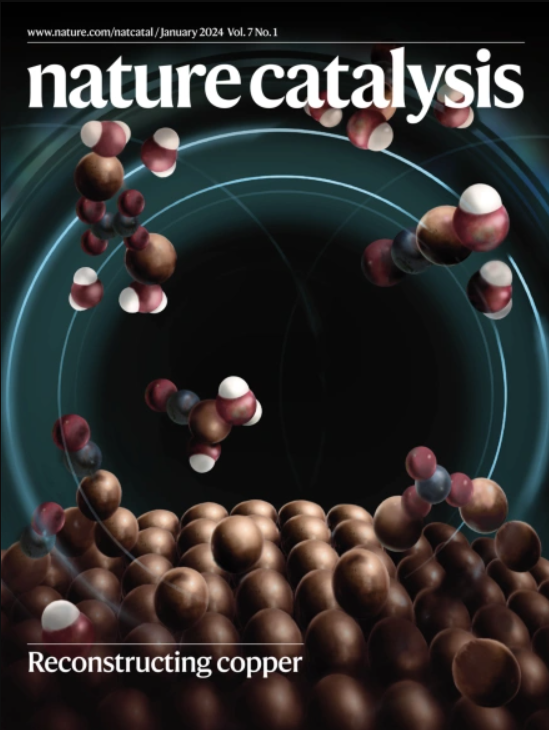Pulsed away
IF 44.6
1区 化学
Q1 CHEMISTRY, PHYSICAL
引用次数: 0

脉冲走
利用碳负载的铂纳米粒子修饰了油胺——一种用于合成胶体纳米粒子的传统配体——研究小组测试了方波电位在1.24 V(称为氧化电位)和0.20 V(还原电位)交替步骤的效果。传统的CV活化需要很长时间(1200秒)才能完全暴露铂表面,而方波电位方法只需40秒就能实现完全的配体去除——通过测量电化学表面积来估计。重要的是,处理后的光谱评估证实了纳米颗粒催化剂的结构完整性,在电化学甲醇氧化测试中也保持了其固有的活性。作者还展示了从Pt纳米颗粒表面去除不同配体(如吡啶、丁胺、1-十二烷基硫醇或三苯基膦)的方法的通用性。此外,利用原位电化学红外光谱和拉曼光谱对反应过程中产生的表面中间体进行了研究,揭示了氧化电位和还原电位对反应过程的贡献。最后,将该策略扩展到pt合金纳米颗粒,证明了纳米颗粒类型的普遍性。这种简单的方法有望影响不同电催化剂的测试和开发。该方法是否也能用于电催化以外的纳米颗粒系统,例如传统上在不同反应环境下使用的颗粒,如热条件下的气固界面,还有待观察。
本文章由计算机程序翻译,如有差异,请以英文原文为准。
求助全文
约1分钟内获得全文
求助全文
来源期刊

Nature Catalysis
Chemical Engineering-Bioengineering
CiteScore
52.10
自引率
1.10%
发文量
140
期刊介绍:
Nature Catalysis serves as a platform for researchers across chemistry and related fields, focusing on homogeneous catalysis, heterogeneous catalysis, and biocatalysts, encompassing both fundamental and applied studies. With a particular emphasis on advancing sustainable industries and processes, the journal provides comprehensive coverage of catalysis research, appealing to scientists, engineers, and researchers in academia and industry.
Maintaining the high standards of the Nature brand, Nature Catalysis boasts a dedicated team of professional editors, rigorous peer-review processes, and swift publication times, ensuring editorial independence and quality. The journal publishes work spanning heterogeneous catalysis, homogeneous catalysis, and biocatalysis, covering areas such as catalytic synthesis, mechanisms, characterization, computational studies, nanoparticle catalysis, electrocatalysis, photocatalysis, environmental catalysis, asymmetric catalysis, and various forms of organocatalysis.
 求助内容:
求助内容: 应助结果提醒方式:
应助结果提醒方式:


